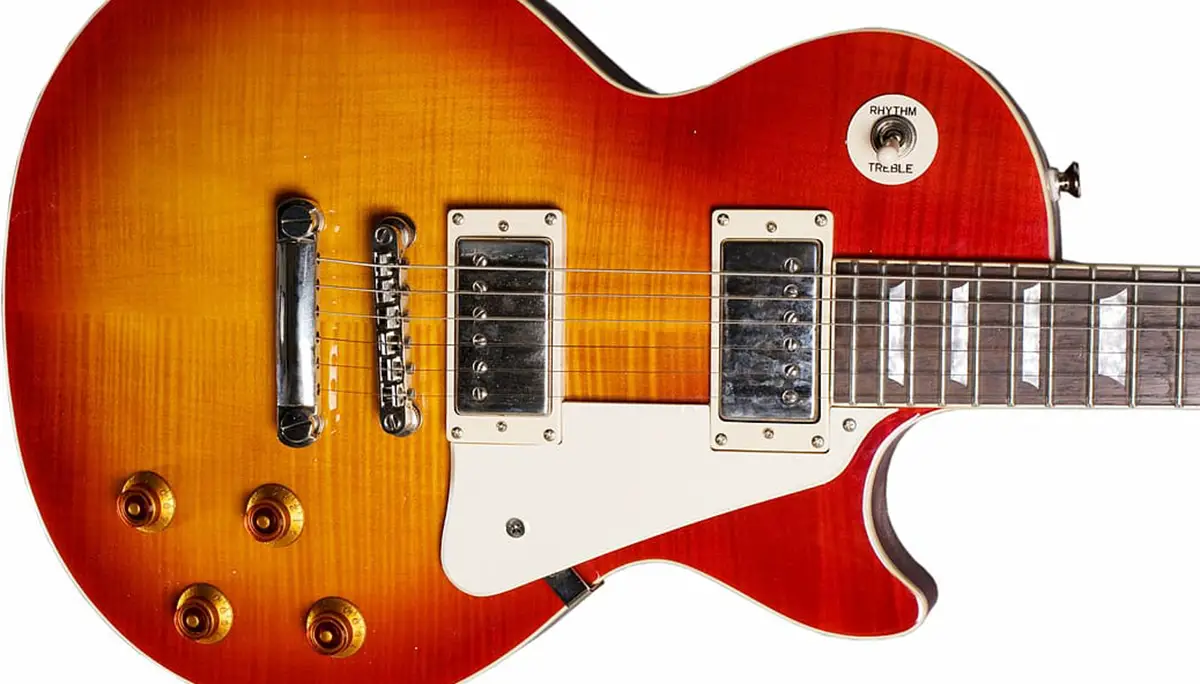In the world of guitars, from the classic six-string to the deep-toned bass, understanding the function of various knobs and switches is crucial for shaping your sound.
Whether you’re a beginner just starting to explore or an experienced musician seeking to refine your tone, it’s essential to know what each knob does and how it contributes to your overall sound.
What do the knobs on a guitar do?
The knobs on a guitar typically control the volume and tone. Volume knobs adjust the loudness of the guitar’s sound, while tone knobs control the brightness or darkness of the sound by filtering out high-frequency tones.
This article will guide you through the various types of control configurations found on some of the most popular guitar models, including Fender, Gibson, Ibanez, PRS, and Jackson. We will also explore the function of knobs on a bass guitar to broaden your understanding.
So, whether you’re strumming chords on a Telecaster or slapping rhythms on a bass, you’ll have the knowledge to tweak and perfect your sound. Let’s dive in!
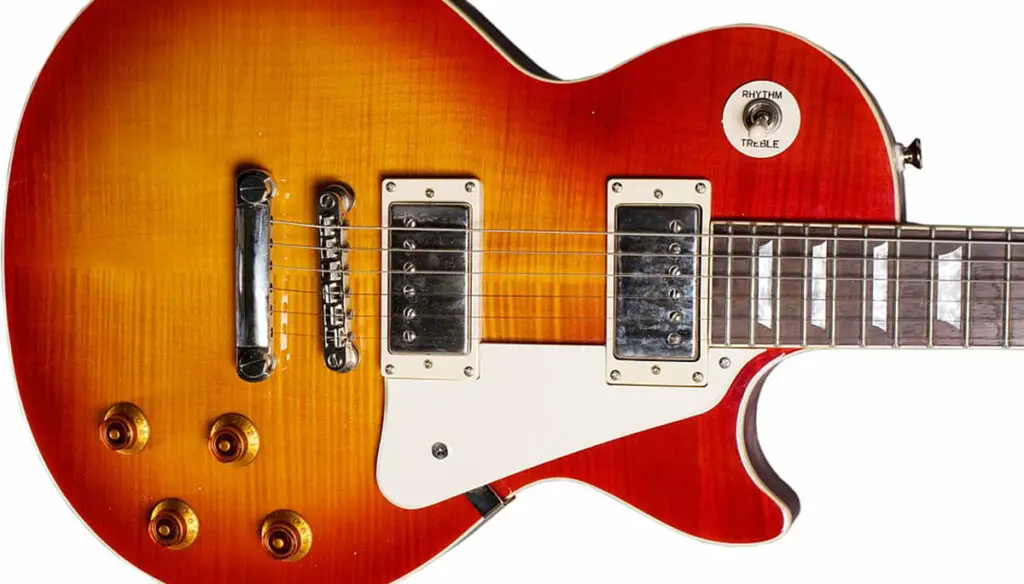
What Do The Knobs On A Guitar Do?
Guitars, both electric and acoustic, can have several different knobs, and what they do can vary based on the model and type of guitar. However, here are some of the most common ones:
- Volume Knob: This is one of the most common knobs found on guitars. As the name suggests, it controls the overall output volume of the guitar. Turning it clockwise increases the volume, and counterclockwise decreases it.
- Tone Knob: This knob allows the player to adjust the tone of the guitar by manipulating the guitar’s high-frequency response. Turning it counterclockwise will typically result in a warmer, bass-heavy tone by reducing the treble (higher frequency) sounds. Conversely, turning it clockwise will often make the sound brighter and more treble-heavy.
- Pickup Selector Switch: Although not a knob, it’s a control commonly found on electric guitars that allow the player to choose between different pickups. Pickups are devices that capture the vibration of the strings and convert them into an electrical signal.
Some guitars have multiple pickups placed at different points along the body, and each pickup can produce a different tone. The pickup selector switch allows the player to choose which pickup’s signal is sent to the amplifier or even blend signals from multiple pickups. - Blend Knob: Some guitars, particularly bass guitars, might have a blend knob. This control allows you to mix the signals from two pickups in varying proportions, giving you a wide range of tones.
The specific configuration and functionality of the knobs vary significantly depending on the make and model of the guitar. Refer to the manufacturer’s instructions or specifications for the most accurate information.
What Do You Call The Tuning Knobs On A Guitar?
I’m adding this section to clarify that tone knobs are not the same thing as tuning knobs.
The tuning knobs on a guitar are known as “tuning pegs” or “tuning machines.” They are part of the guitar’s machine head (also known as the tuning head or headstock), which is located at the end of the guitar neck.
Each string of the guitar is wound around a separate tuning peg. When you turn a tuning peg, it changes the tension of the string it’s attached to, which in turn alters the pitch of the string.
Turning the peg one way tightens the string (raising its pitch), and turning it the other way loosens the string (lowering its pitch). This is how you tune the guitar, by adjusting the pitch of each string until it matches the desired note.
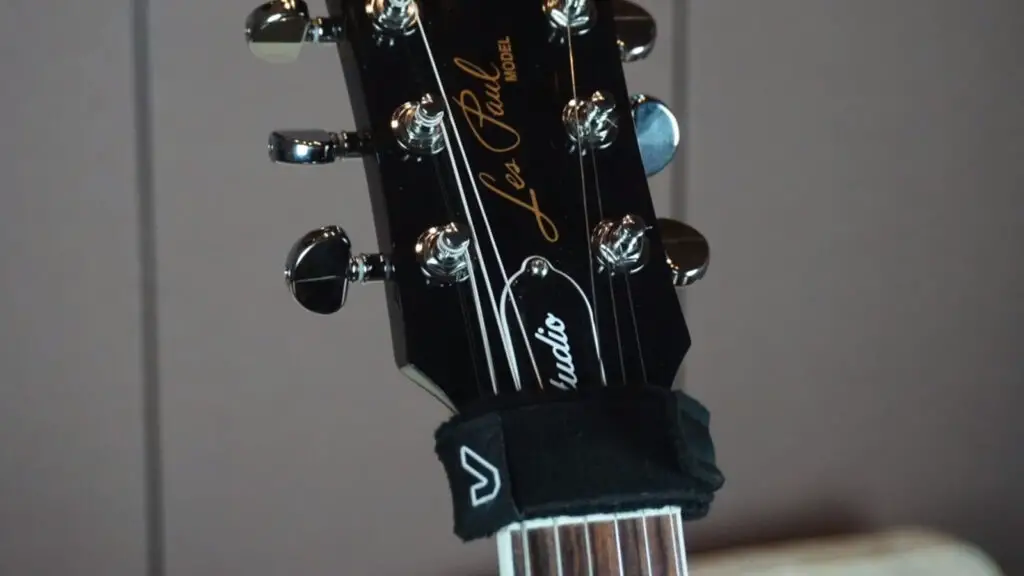
What Do The Knobs On A Fender Do?
For Fender guitars, the function of the knobs can vary depending on the specific model.
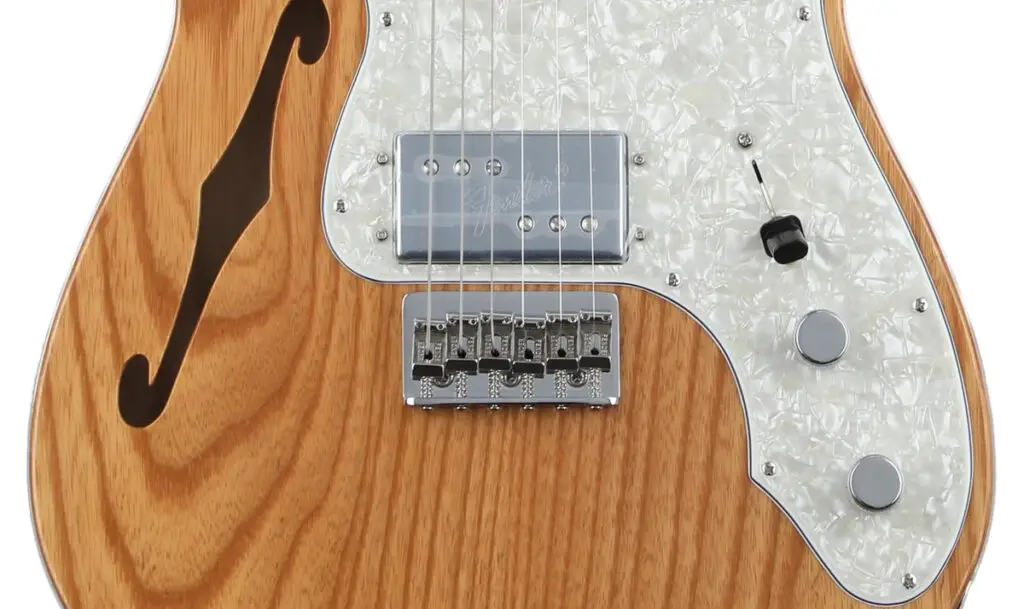
What Do The Knobs On A Telecaster Do?
A standard Fender Telecaster, a popular model of electric guitar, typically has three controls: two knobs and one switch. Here’s what they do:
- Volume Knob: This knob controls the overall output volume of the guitar. Turning it up (clockwise) increases the volume, and down (counterclockwise) decreases it.
- Tone Knob: This knob allows you to adjust the tone of the guitar by manipulating the guitar’s high-frequency response. Turning it down (counterclockwise) will typically result in a warmer, bass-heavy tone by reducing the treble (higher frequency) sounds. Conversely, turning it up (clockwise) will often make the sound brighter and more treble-heavy.
- Pickup Selector Switch: This is a lever switch that allows you to choose between the guitar’s two pickups (devices that capture the vibration of the strings and convert them into an electrical signal).
The Telecaster has one pickup near the neck (neck pickup) and one near the bridge (bridge pickup). Each pickup has a distinctive sound: the neck pickup generally provides a warmer, fuller sound, while the bridge pickup offers a brighter, sharper sound.
The switch typically has three positions: the up position activates the neck pickup, the down position activates the bridge pickup, and the middle position activates both pickups together.
Please note that these functions can vary slightly depending on the specific model of the Telecaster or any modifications that have been made to it.

What Do The Knobs On A Stratocaster Do?
A standard Fender Stratocaster, another popular model of electric guitar, typically has five controls: three knobs and one switch with five positions. Here’s what they do:
- Volume Knob: This is the knob closest to the strings. It controls the overall output volume of the guitar. Turning it clockwise increases the volume, and counterclockwise decreases it.
- Tone Knob 1: This is typically the knob immediately below the volume knob. On most Stratocasters, it controls the tone for the neck pickup, allowing you to adjust the amount of treble or bass sound.
Turning it counterclockwise will typically result in a warmer, bass-heavy tone by reducing the treble (higher frequency) sounds. Conversely, turning it clockwise will often make the sound brighter and more treble-heavy. - Tone Knob 2: This is usually the knob furthest away from the strings. It controls the tone for the middle and bridge pickups in the same way as the first tone knob.
- Pickup Selector Switch: The Stratocaster has a lever switch that allows you to choose between the guitar’s three pickups (devices that capture the vibration of the strings and convert them into an electrical signal).
The Stratocaster has three pickups: one near the neck (neck pickup), one in the middle, and one near the bridge (bridge pickup).
The switch has five positions, each activating a different combination of pickups:
- Position 1 (all the way towards the bridge): Activates the bridge pickup only.
- Position 2: Activates the bridge and middle pickups together.
- Position 3: Activates the middle pickup only.
- Position 4: Activates the middle and neck pickups together.
- Position 5 (all the way towards the neck): Activates the neck pickup only.
Again, these functions can vary slightly depending on the specific model of the Stratocaster or any modifications that have been made to it.
You can find more information about pickups and tone controls on Fender’s website.

What Do The Knobs On A Les Paul Do?
A Gibson Les Paul, another well-known model of electric guitar, usually has four knobs and one switch. Here’s what they do:
- Volume Knobs: There are typically two volume knobs on a Les Paul, one for each pickup (the neck pickup and the bridge pickup). These knobs allow you to control the output volume of each pickup independently.
Turning a knob clockwise increases the volume of its respective pickup, and counterclockwise decreases it. - Tone Knobs: Similarly, there are also two tone knobs, one for each pickup. These knobs allow you to adjust the tone of each pickup independently by manipulating the pickup’s high-frequency response.
Turning a knob counterclockwise will typically result in a warmer, bass-heavy tone by reducing the treble (higher frequency) sounds. Conversely, turning it clockwise will often make the sound brighter and more treble-heavy. - Pickup Selector Switch: The Les Paul has a toggle switch that allows you to choose between the guitar’s two pickups.
The Les Paul has one pickup near the neck (neck pickup) and one near the bridge (bridge pickup).
The switch typically has three positions: the up position activates the neck pickup, the down position activates the bridge pickup, and the middle position activates both pickups together.
The specific configuration and functionality of these knobs and switch can vary depending on the specific model of the Les Paul or any modifications that have been made to it.
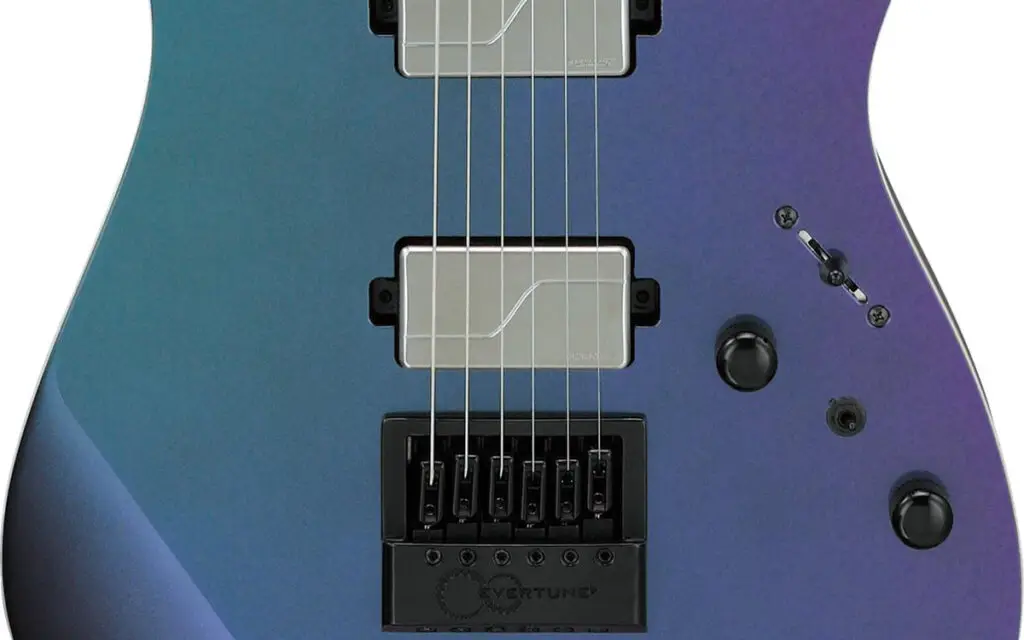
What Do The Knobs On An Ibanez Do?
The knobs on an Ibanez guitar can have different functions depending on the specific model, but here’s a general idea:
- The top knob is usually the volume control for the neck pickup.
- The middle knob typically controls the volume of the bridge pickup.
- The bottom knob usually controls the overall tone.
Alternatively, in some models:
- The top knob controls the overall volume.
- The middle knob adjusts the blend between pickups.
- The bottom knob still controls the overall tone.
You can find more information about pickups and tone controls on the Ultimate Guitar website.
What Do The Knobs On A PRS Do?
For PRS guitars, the function of the knobs can vary depending on the specific model.
PRS S2
For the S2 series, each guitar typically has a three-way blade pickup selector, a volume knob, and a push-pull tone knob. Pulling up on the tone knob switches the pickups from humbucking (a configuration that reduces noise) to single-coil.
The S2 Singlecut and S2 Singlecut semi-hollow models have an additional volume knob and an additional push-pull tone knob for more control.
You can find more information about pickups and tone controls on the PRS website.
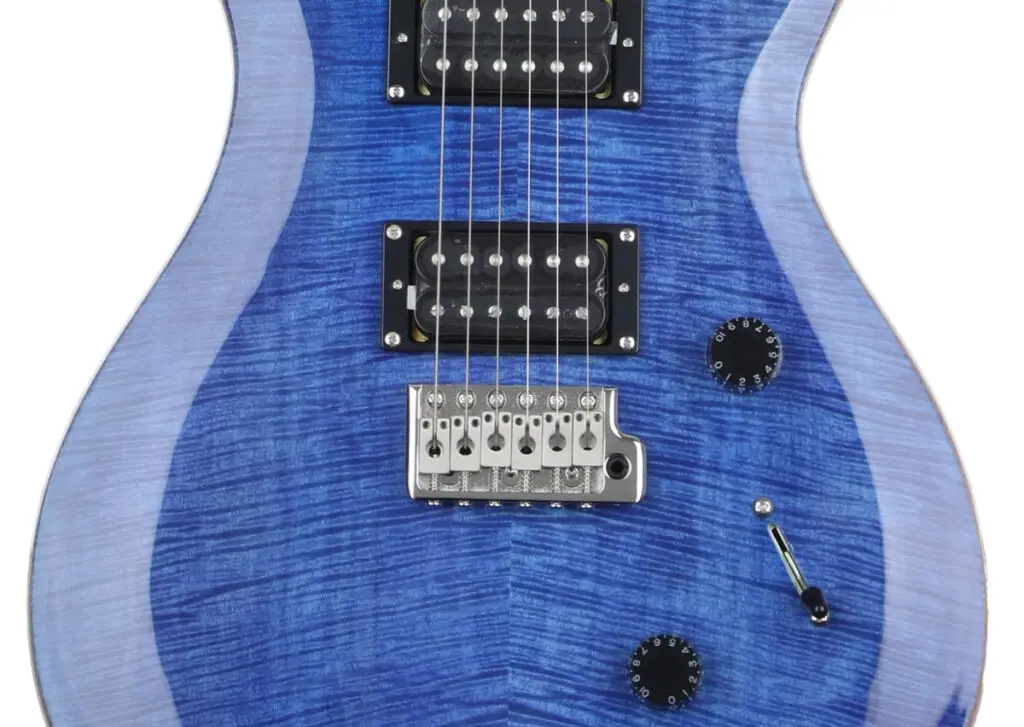
PRS Custom 24
The PRS Custom 24, which is a popular PRS model, has a 5-way blade switch that allows you to choose between different pickup positions, along with volume and tone controls. Here’s how they function:
- 5-Way Blade Switch: This switch allows you to choose between the following pickup configurations:
- Position One: Bridge humbucker
- Position Two: Bridge humbucker with neck single-coil, in parallel
- Position Three: Bridge and neck humbuckers
- Position Four: Neck single-coil with bridge single-coil, in parallel
- Position Five: Neck humbucker
- Volume Control: This knob controls the overall volume of the guitar. You can clean up your tone significantly just by rolling back the volume.
- Tone Control: This knob allows you to adjust the brightness or darkness of your sound. It works in conjunction with the volume control and the 5-way blade switch to offer a wide range of tonal possibilities.
You can find more information about pickups and tone controls on the PRS website.
What Do The Knobs On A Jackson Do?
Jackson guitars often favor a simple 2-knob configuration. These typically include:
- A single master volume knob.
- A tone control knob.
The exact controls can vary depending on the specific model of the guitar.
What Are The Types Of Guitar Control Configurations?
Guitar control configurations can vary greatly between different guitar models and manufacturers, but here are some of the most common types:
- Single Volume, Single Tone (2-knob configuration): This is the simplest control configuration and is most often seen on basic electric guitars and bass guitars. There’s one knob to control the overall volume and one knob to control the overall tone.
- Dual Volume, Dual Tone (4-knob configuration): This is a common configuration on guitars with two pickups, such as the Gibson Les Paul. There are two volume knobs (one for each pickup) and two tone knobs (also one for each pickup).
- Single Volume, Dual Tone (3-knob configuration): This configuration, often seen on guitars like the Fender Stratocaster, features one volume knob and two tone knobs. The tone knobs typically control the tone of two of the guitar’s pickups, usually the neck and middle pickups.
- Master Volume, Blend, Tone (3-knob configuration): Some guitars, like certain models of Ibanez, may have a master volume knob, a blend knob (to blend the output of two pickups), and a master tone knob.
- Single Volume, Single Tone, Pickup Selector: Many guitars with multiple pickups also feature a pickup selector switch. This allows the guitarist to select between different combinations of pickups, each of which produces a different tone. This can be found in both the 2-knob and 3-knob configurations.
- Push-Pull or Push-Push Knobs: Some guitars have push-pull or push-push knobs, which can be pushed in or pulled out to engage a secondary function, such as splitting a humbucker pickup into a single-coil pickup.
- Varitone or Rotary Switches: Some guitars, like certain models of Gibson, have a Varitone switch or similar rotary switch that offers a selection of preset tone settings.
These are just some of the most common configurations. There are many more possible combinations, and the exact configuration can vary greatly depending on the specific model of the guitar.
Custom guitars and modified guitars can have unique control configurations as well.
What Do The Knobs On A Bass Guitar Do?
The controls on a bass guitar can vary depending on the specific model, but there are a few common configurations that you’ll often see:
- Single Volume, Single Tone (2-knob configuration): This is the simplest control configuration and is often found on basic bass guitars. There’s one knob to control the overall volume and one knob to control the overall tone.
- Dual Volume (2-knob configuration): Some bass guitars with two pickups (one near the neck and one near the bridge) have two volume knobs, one for each pickup. This allows you to adjust the volume of each pickup independently.
- Volume and Blend (2-knob configuration): In this setup, one knob controls the overall volume, and the second knob allows you to blend the signals from the two pickups. Turning the blend knob one way might favor the neck pickup while turning it the other way might favor the bridge pickup.
- Dual Volume, Master Tone (3-knob configuration): This is similar to the dual volume setup but adds a third knob to control the overall tone.
- Master Volume, Pickup Blend, Master Tone (3-knob configuration): This setup is also common on bass guitars with two pickups. One knob controls the overall volume, one knob controls the blend between the two pickups, and one knob controls the overall tone.
- Active Bass Controls: Some bass guitars have active electronics, which require a battery. These basses often have additional controls for EQ, such as bass, mid, and treble knobs.
It’s also worth noting that some bass guitars have a pickup selector switch, which lets you choose between different combinations of pickups.
As always, remember that the exact controls and their functions can vary depending on the specific model of the bass guitar.
Conclusion
The knobs and controls on a guitar or bass are not just there for aesthetic appeal – they offer a world of tonal possibilities right at your fingertips.
From the simple two-knob configuration on a Jackson guitar to the more complex arrangements found on PRS or Gibson models, these controls allow you to shape your sound in a myriad of ways. Understanding them is a key step in unlocking your instrument’s full potential.
As you continue your musical journey, don’t be afraid to experiment with these controls. It’s all part of finding your unique sound. Keep exploring, keep practicing, and most importantly, keep making music!

